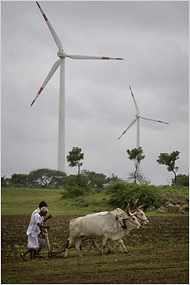 Like it or not, “green” is a relative term. If you purchase a truck that gets 18 miles per gallon, is that good or bad for the environment? If you were driving a truck that got 13 miles to the gallon, it’s good. The same applies to many marketing technologies.
Like it or not, “green” is a relative term. If you purchase a truck that gets 18 miles per gallon, is that good or bad for the environment? If you were driving a truck that got 13 miles to the gallon, it’s good. The same applies to many marketing technologies.
It’s easy to look past traditional offset and gravitate to digital and electronic technologies because of the perception that they are greener. But the fact is, traditional offset is still a necessary component of a successful marketing program. Fortunately, as I’ve written here before, offset technologies are getting greener and marketers don’t need to feel guilty about using them.
For example, Heidelberg is currently doing the media rounds announcing that its Speedmaster XL 105 offset press (pictured above) consumes between 10–20% less energy than comparable systems. Although energy costs only account for between 2-3% of the production costs of a print job, every little bit helps.
According to Heidelberg,
In the last few months, Heidelberger Druckmaschinen AG (Heidelberg) has been performing comparative measurements on various makes of press to provide greater transparency of the energy consumption and thus the CO2 emissions of its presses. To this end, Heidelberg processed an identical job on each press using the same ink, printing stock and production speed and measured the energy consumption, including all the peripherals, such as those required for cooling and air supply. This equipment often accounts for half the energy consumption.
[Our] comparison showed that, at production speeds of between 14,000 and 18,000 sheets per hour, the Speedmaster XL 105 was the B1 press with the lowest energy consumption. Without drying, the Speedmaster XL 105 uses between 5-10% less energy than all the other competitors featured in the comparison. With a coating unit and IR and hot-air drying, this figure climbs to between ten and 20%. And this was the case even though the maximum connected loads of some Heidelberg presses are higher than those of its competitors. This clearly demonstrates the flexibility and reliability in production that Heidelberg offers its customers, particularly with round-the-clock production at speeds of 18,000 sheets an hour
Peripherals play a key role in the energy balance. This because a host of other consumers are required in addition to the press itself – dryers, the dampening solution supply system, inking unit temperature control, air supply and compressed air. . . [P]eripherals can account for up to 50% of the connected load and the energy consumption. Often, manufacturers compare presses with and without inking unit temperature controls. With an eight-color press, this can account for up to 20% of the energy consumption.
The point here is that marketers need to be practical. We all want to be green, but we need to be cost-effective and get great results from marketing programs, too. That means having a full range of production technologies at our fingertips. With the advancements being made in offset—as well as digital—printing technologies, you can print offset and still be greener, too.
So before abandoning traditional offset printing for “greener” alternatives, poke around and look for greener alternatives within the offset printing environment. You might be surprised just how “green” traditional offset has become.
Like this post? See all my “Greening Print Marketing” posts.


